Widely eaten in the past, raccoon cuisine has become far less common. Here’s how to eat raccoon safely, plus 3 recipes for the modern day.
Can You Eat a Raccoon?
Because raccoons are generally considered dirty, trash-eating varmints, the idea of us eating them is rather nauseating to many mainstream Americans. So you should not expect to find “Quality Raccoon” on your grocer’s shelves anytime soon.
It is interesting to note, however, that many thousands of raccoon are still eaten each year right here in the good old United States of America. In fact, the Delafield Coon Feed, held annually in Delafield, WI, has been a popular family event since 1928.
I grant you that the culinary use of raccoon meat is mainly associated with certain regions of the American South, like Arkansas, where the Gillett Coon Supper is an important annual event for local politicians seeking office.
Raccoons as Wild Game
We need to remember that the harvest and consumption of whatever wildlife was around is as old as humankind itself and was often the driving force behind human exploration into wild and unsettled areas. Wild hunted meat (often called game meat or bush meat) still remains a primary food source for many native peoples throughout the world.
Everything from shellfish to bear is still hunted by human beings today somewhere on this globe. It is critical to many cultures that they continue to hunt, fish, and otherwise harvest wildlife for dietary supplementation, subsistence, recreation, social and cultural needs, and other purposes that result in the consumption of game meat.
You May Also Enjoy:
“9 Ways to Keep Raccoons Out of Your Compost Pile”
“An Ode to Wild Persimmons (+My Mother’s Recipe for Persimmon Bread)”
Personally, I love to eat wild game. Deer, turkey, salmon, trout, shellfish, and duck are among my favorites. And while this is all “normal” to me, I still cringe about eating raccoon meat. But why? These often annoying critters are everywhere!
Marjory has always said, “Don’t ask if you have raccoon, ask where is the nearest raccoon?” The raccoon is a mammal native to North America and can be found throughout the United States, except for in parts of the Rocky Mountains and in southwestern states like Nevada, Utah, and Arizona. It can also be found in parts of Canada, Mexico, and the northern-most regions of South America.
Raccoons 101
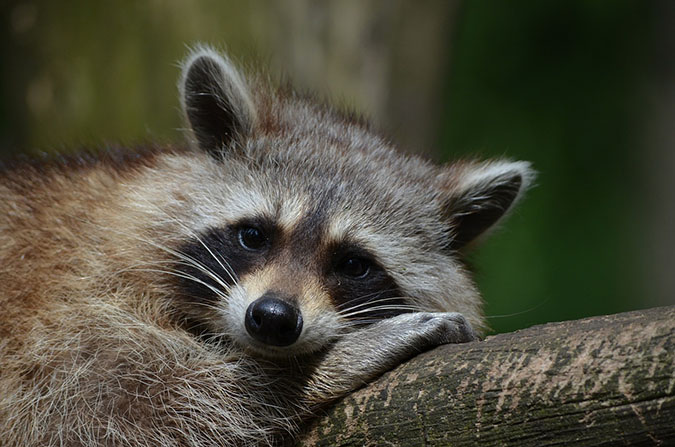
Image by Claudia Peters from Pixabay
During the 20th century, raccoons were introduced to other parts of the globe, and they now have an extensive presence in countries like France, Ireland, Germany, Russia, and Japan. The adult raccoon is a medium-sized mammal and the largest of the Procyonidae family.
You May Also Enjoy:
“A Surefire Raccoon Trapping Solution”
“5 Inexpensive, Simple Solutions For Small-Space Composting”
“Wild Mushroom Foraging: Identifying and Eating Foraged Plants”
Raccoons average 24 to 40 inches in length and can weigh between 14 and 35 lbs., and sometimes more, depending upon habitat and available food. The male raccoon, called a boar, is slightly larger than the female, known as a sow. The young raccoons are called kits and are not usually eaten until they reach adulthood.
Raccoons prefer forested areas near a stream or water source, but have adapted to various environments in and around human beings. Raccoon populations can get quite large in urban areas, owing to hunting and trapping restrictions, few predators, and human-supplied food.
Yeah. But can you eat them?
Is It Safe to Eat Raccoon Meat?
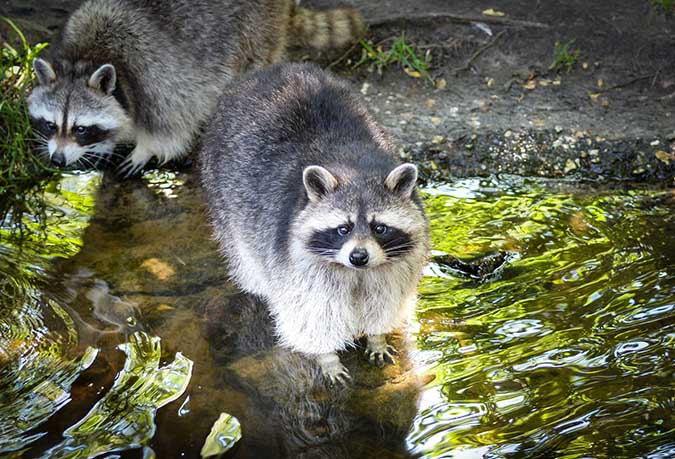
Image by Rudy and Peter Skitterians from Pixabay
Technically the answer would have to be yes. Historically, baked raccoon was once a treasured holiday treat for many Southerners, although it has all but disappeared from the Southern dinner table in recent years.
Why has this tradition waned?
One reason often cited is that most of us live in urban areas and raccoon that live near humans tend to eat our waste and garbage. Also, raccoons that live near us often fish and feed in urban rivers and streams that may well be, and usually are, frightfully polluted with lawn-care fertilizers and pesticides.
You May Also Enjoy:
“How Many Raccoons is Too Many Raccoons?”
Raccoons will eat almost anything, but are particularly fond of creatures found in water—clams, crayfish, frogs, fish, and snails. When they eat these foods from our polluted waterways, the toxins build up in their flesh. When we eat the meat, we get the toxins as a kind of “parting gift.”
It is highly recommended that you never consume urban-dwelling raccoon.
Should You Be Concerned About Rabies?
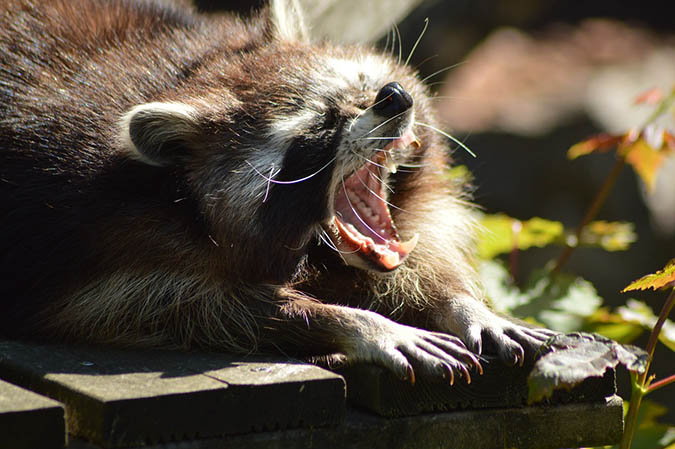
Image by Dorothée QUENNESSON from Pixabay
But perhaps the foremost reason that raccoons are not eaten like they once were is a fear of rabies. Many of us associate raccoon with rabies, and for good reason. Raccoons, along with foxes (red and gray), skunks, and bats are considered a primary carrier of the rabies virus in the United States.
One bit of good news is that, according to the Centers for Disease Control and Prevention, only one human has ever died from the raccoon strain of rabies.
You May Also Enjoy:
“5 Excellent Reasons To Keep Backyard Chickens”
We should also dispel the myth that a raccoon seen in daytime is rabid. If you see a raccoon in your yard during the day, don’t panic. It’s perfectly normal for raccoons to be active throughout the day. Chances are that it is a female, and she is not necessarily sick or dangerous. She may merely be foraging longer hours to support her young, visiting a garden while your dogs are indoors, or moving to a new location.
Also note that a rabid raccoon will not usually be feeding, so if the raccoon is getting your chickens, he is probably fair game! Still, be on the lookout for any unusual behavior and, if you get a raccoon from someone else, make sure you know exactly where it came from.
Raccoon Roundworms Can Harm Humans
While rabies is not nearly as big of a concern as the fear of it would lead one to think, there is one thing we should worry about when eating raccoon. That would be raccoon roundworm. This disease is caused by a parasite, a roundworm called Baylisascaris procyonis. The roundworm larvae cause problems as they travel through the person’s muscles and various organs, including the liver, brain, lungs, and eyes. The severity of the infection depends on how many of the parasite’s eggs were ingested, and where the larvae migrate.
Although serious infections are rare, raccoon roundworm can be fatal in people. The young and elderly are particularly susceptible. Raccoon are the primary host of this roundworm, which is commonly found in their small intestines. The parasite has also been found in mice, squirrels, rabbits, birds, woodchucks, and dogs.
Raccoon shed millions of the microscopic roundworm eggs in their feces. It takes about a month for newly deposited eggs to develop to the infectious stage. The eggs can only develop into worms when they’re in an animal’s body, but the eggs are hardy and may survive for years in soil, sand, or water.
You May Also Enjoy:
“Using Game Cameras To Protect Your Backyard Chickens”
“How to Not Die While Wildcrafting: 15 Rules for Foraging Safely”
People may encounter the eggs through direct contact with raccoon droppings or by touching a contaminated area or object. If they don’t wash their hands, they may later transfer the eggs to their mouths. Small children are particularly vulnerable because they tend to put their hands, and other objects such as bark, wood chips, toys, soil, or even droppings, into their mouths. Other animals may become infected by eating an infected animal or through contact with the feces of an infected animal.
If you cook the raccoon meat to an internal temperature of 165˚F, the problem of infection through ingestion can be reduced.
If someone’s been exposed, or even suspects exposure to raccoon roundworm, seek immediate medical care. If the worms can be killed before they migrate through the body, there’s a very good chance that the disease will be prevented. But if the condition is not treated early, recovery is less assured. Raccoon roundworm infections are very difficult to diagnose in people.
Okay, But Should You Eat Raccoons?
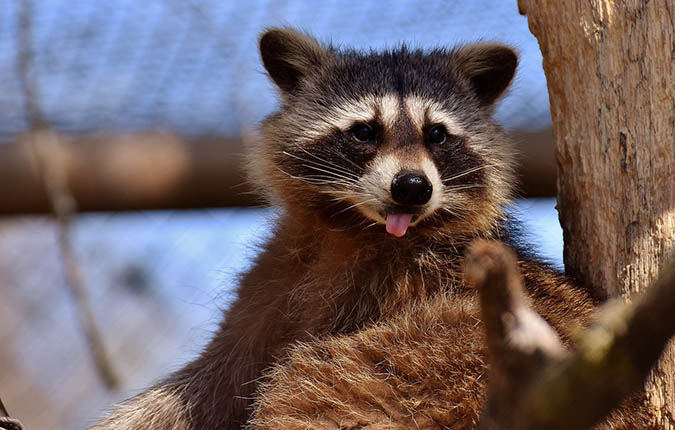
Image by 🎄Merry Christmas 🎄 from Pixabay
Okay, so technically we can eat them, but should you eat them?
If it makes you uncomfortable for safety reasons, or just because it is a raccoon, then you should not eat it. If you’re not uncomfortable, though, read on.
The simple fact is that while primarily hunted for their fur, raccoon were, for hundreds of years, also a source of food for Native Americans. It has been noted in historical documents that barbecued raccoon was a traditional food on American farms. We learned to eat it from the friendly Natives our original settlers first encountered. It was often served on special occasions as a festive meal.
You May Also Enjoy:
“Choose the Perfect Chicken Coop: 4 Essential Considerations”
Raccoon was eaten by American slaves at Christmastime right up until the end of the Civil War in 1865. Raccoons continued to be an important protein in many “economically challenged” Southern regions after the Civil War and even right up to the present day.
But do not think for even a minute that it was strictly a dish of the poor or rural; in the San Francisco newspaper The Golden Era, in the edition dated December 21, 1856, raccoon is among the specialties advertised for the holiday season. President Calvin Coolidge kept a pet raccoon he named Rebecca. Much like the Thanksgiving turkeys that get “pardoned” every year by modern US presidents, Rebecca was originally sent to the White House to be served at the First Family’s lavish Thanksgiving dinner.
The first edition of The Joy of Cooking, released in 1931, contained recipes for preparing raccoon.
How to Cook a Raccoon
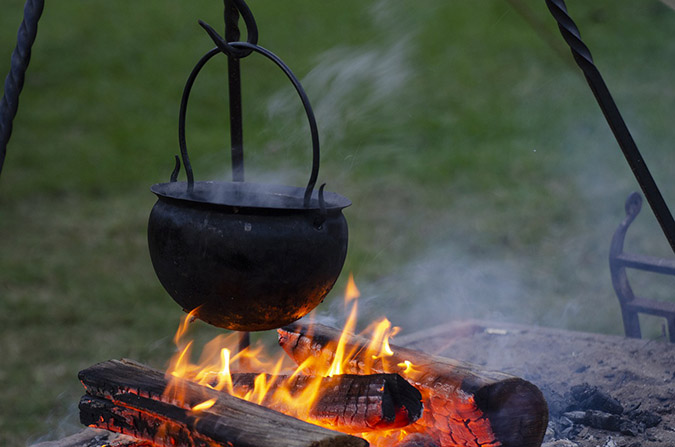
Image by Jalyn Bryce from Pixabay
One raccoon aficionado I spoke to at a farmer’s market, Mr. Franklin James, said, “Look here, I grew up eating raccoon with sweet potatoes, and you gotta know that once you put those sweet potatoes around him, maybe add some onions, and you bake him, OH my, let me tell you, you have a good eat there. But none of the young people know how to do that anymore.”
So, go ahead and give it a try if you are an adventurous eater, but always keep in mind where the raccoon came from. If you are in an urban neighborhood, I would not personally use the local critters, but would find a friend in a rural setting that has raccoon problems and trap some from there.
After talking to many of my friends and neighbors, it would seem that raccoon may well be good eats, but they are probably not for everyone. As for me, if I get the chance, I think I’m going to give it a try!
With that in mind, I have been looking for raccoon recipes and found the three below, which all sound intriguing. The first one comes from Sylvia’s Family Soul Food Cookbook by Sylvia Woods, published by Harper Collins.
Dolly’s Delicious ‘Coon
1 5-lb. raccoon
3 large onions
1/4 lb. fatback
2 Tbsp. red pepper flakes
1 tsp. seasoned salt
2 tsp. salt
2 tsp. pepper
2 tsp. Accent (optional)
2 c. chopped onion
Place the raccoon in a pot with 1 onion and a dash of salt and pepper. Bring to a slow boil and then allow it to simmer over low heat for an additional 6 hours. Then remove from water and allow to cool. Debone the raccoon when cool enough to handle and place in a roasting pan with all remaining ingredients. Bake for 1 hour at 350˚F. Serve and enjoy!
Another recipe, recommended to me by my friend at the farmer’s market, is for BBQ Raccoon:
BBQ Raccoon
1 4–6 lb. raccoon, cut into serving pieces
1 c. red wine
2 onions, sliced
3 bay leaves
1 Tbsp. salt
1 tsp. pepper
3 cloves garlic, sliced
2 c. of your favorite barbecue sauce
1 Tbsp. paprika
Place the raccoon pieces in a large pan. Add the wine, onions, bay leaves, salt, pepper, and garlic. Add enough water to cover the meat. Bring to a boil. Cover and simmer for 1 hour. After 1 hour, remove the meat and drain. Place the raccoon in a greased baking dish. Mix the barbecue sauce and paprika together and pour over the meat. Bake at 325˚F for 50–60 minutes. Serve and enjoy!
And finally, here’s a recipe for Raccoon Stew that was supposedly served at Monticello, the home of Thomas Jefferson, our nation’s third President and co-author of the Declaration of Independence.
Raccoon Stew
1 raccoon, cleaned, skinned, and quartered
Pepper to taste (heavy is recommended)
4 cups water
2 onions, quartered or diced
2 turnips, cubed
1 stalk celery, diced
2 large sweet potatoes, sliced in chunks or cubed
Salt
In a large pot, place the meat and cover with water. Bring to a boil and cook for 1 hour. Remove meat and allow to cool. Discard water. Remove meat from bones and cut into 1″–2″ cubes. Sprinkle liberally with pepper. Add meat back to pot and add fresh water, carrots, celery, and potatoes. Season to taste with salt. Bring to a boil, reduce heat, and cook until veggies are tender. Adjust seasoning if needed. Serve and enjoy!
What Do You Think?
Do you eat raccoon? What’s your favorite way to cook it? Let us know in the comments below!
___________
The Grow Network is a participant in the Amazon Services LLC Associates Program, an affiliate program designed to provide a means for our team to earn fees for recommending our favorite products! We may earn a small commission, at no additional cost to you, should you purchase an item after clicking one of our links. Thanks for supporting TGN!

The Grow Network is a global network of people who produce their own food and medicine. We’re the coolest bunch of backyard researchers on Earth! We’re constantly sharing, discovering, and working together to test new paths for sustainable living—while reconnecting with the “old ways” that are slipping away in our modern world. We value soil, water, sunlight, simplicity, sustainability, usefulness, and freedom. We strive to produce, prepare, and preserve our own food and medicine, and we hope you do, too!
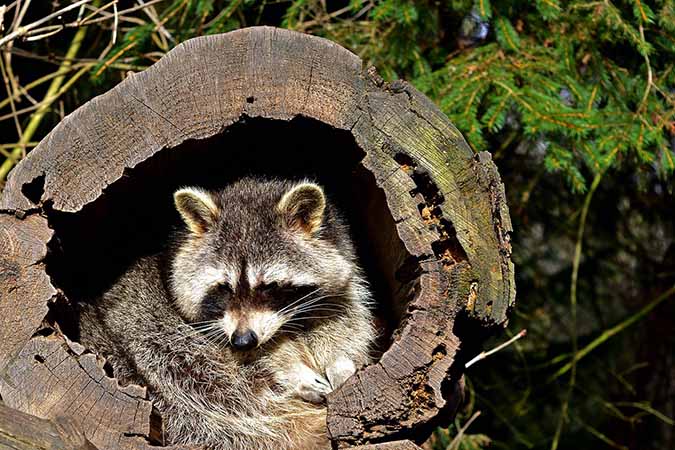
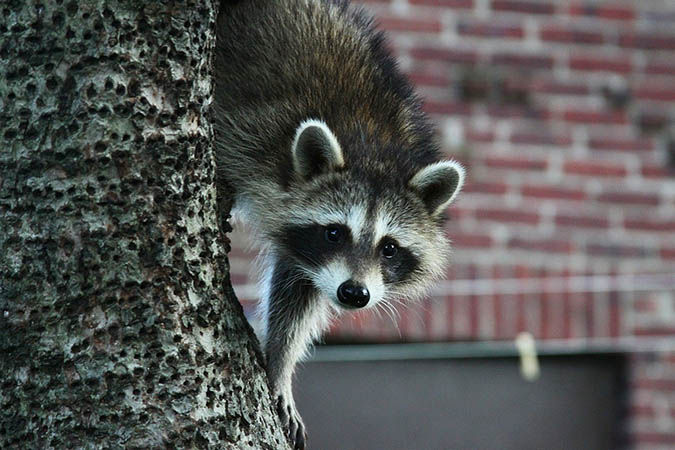







COMMENTS(1)
We used to eat raccoons, trying to practice in case the SHTF. We lived in the suburbs, with or back yard opening up to thousands of acres of fields and woods. But after a raccoon came in through the cat door and attacked our kitten during the daytime, my wife took the kitten to the vet. Since raccoons are normally nocturnal, the vet feared it had rabies. My wife had to undergo extremely painful rabies shots in her abdomen. No more eating raccoons. They became Racccoona-Non-Grata; to be killed on sight.